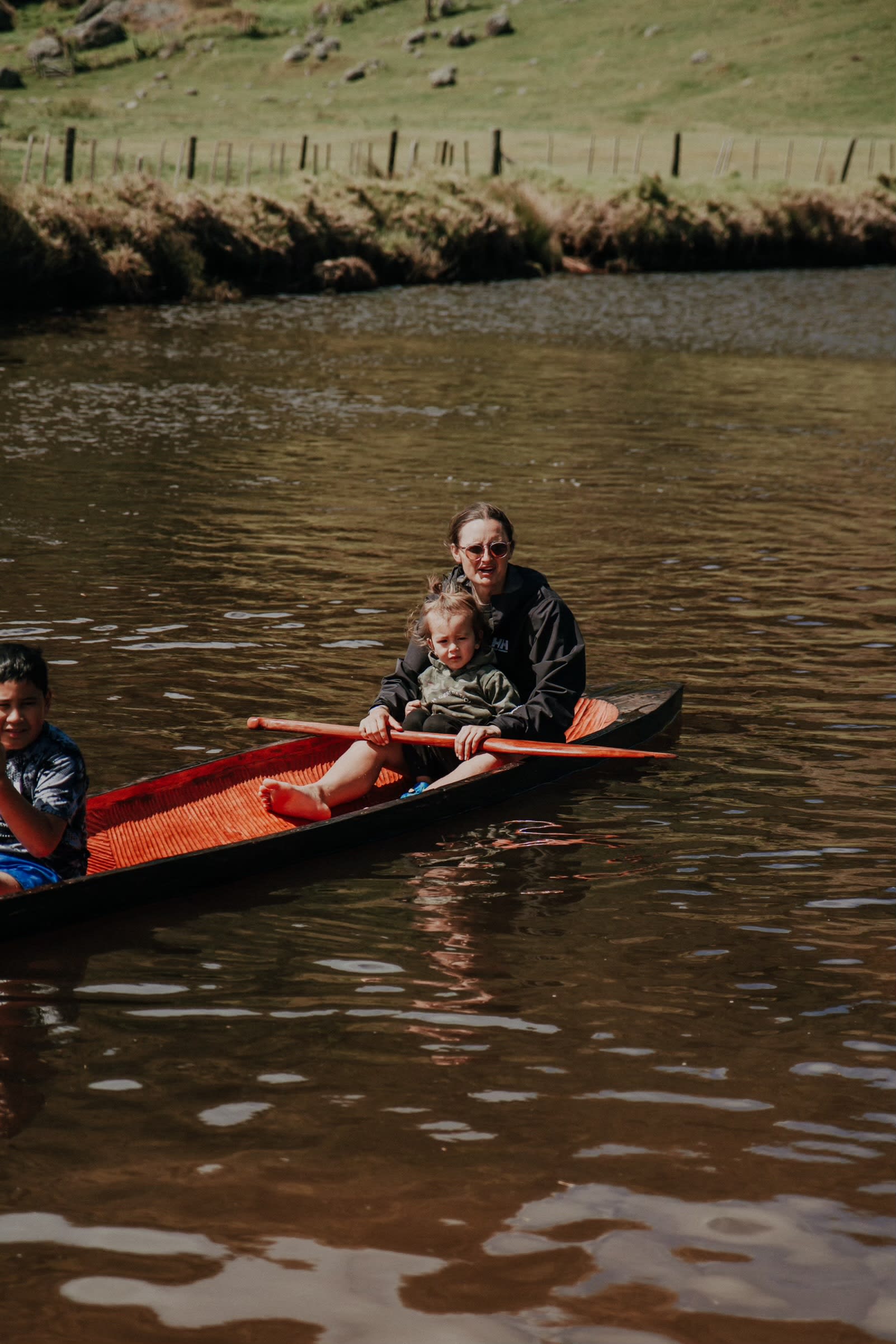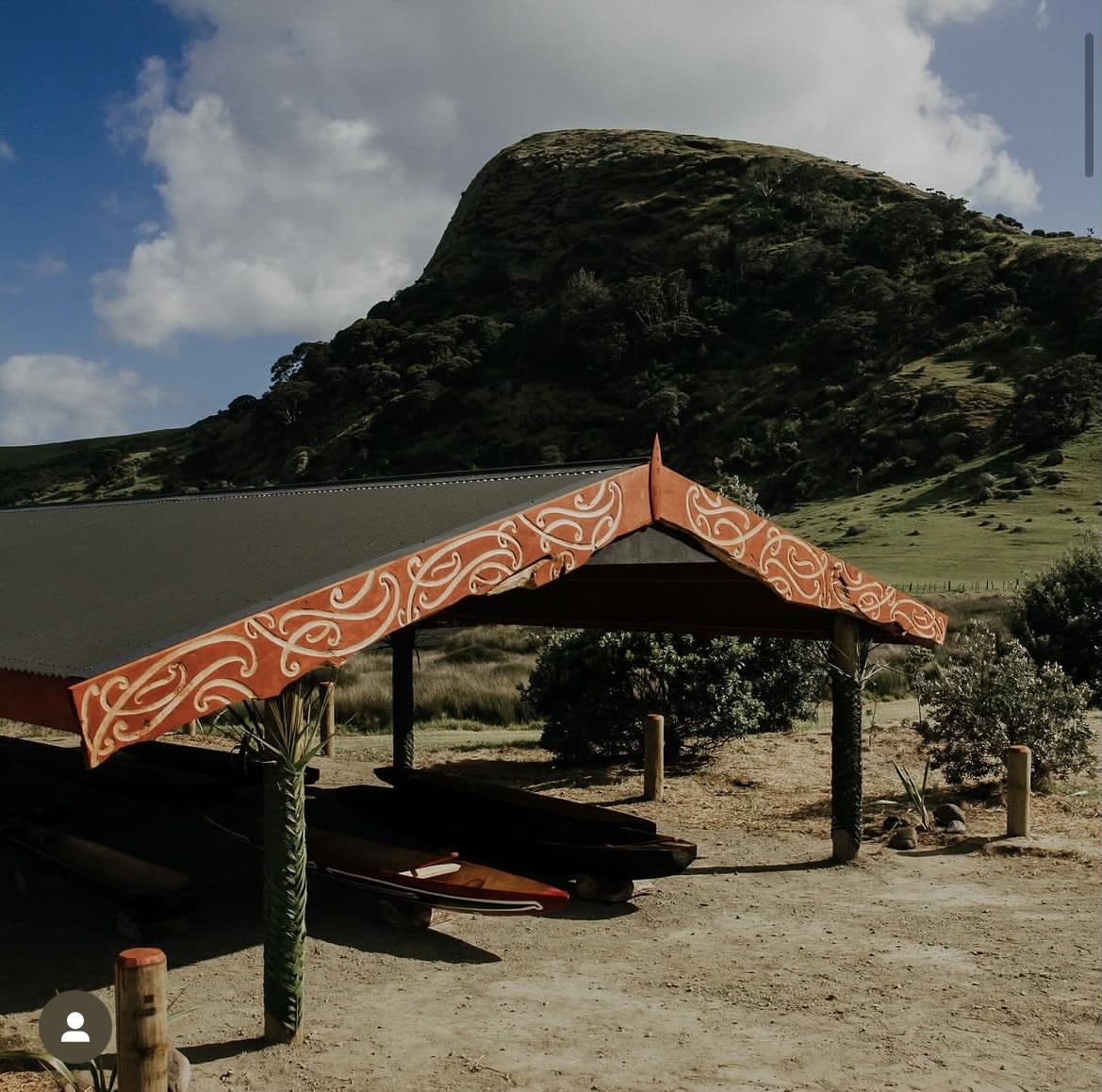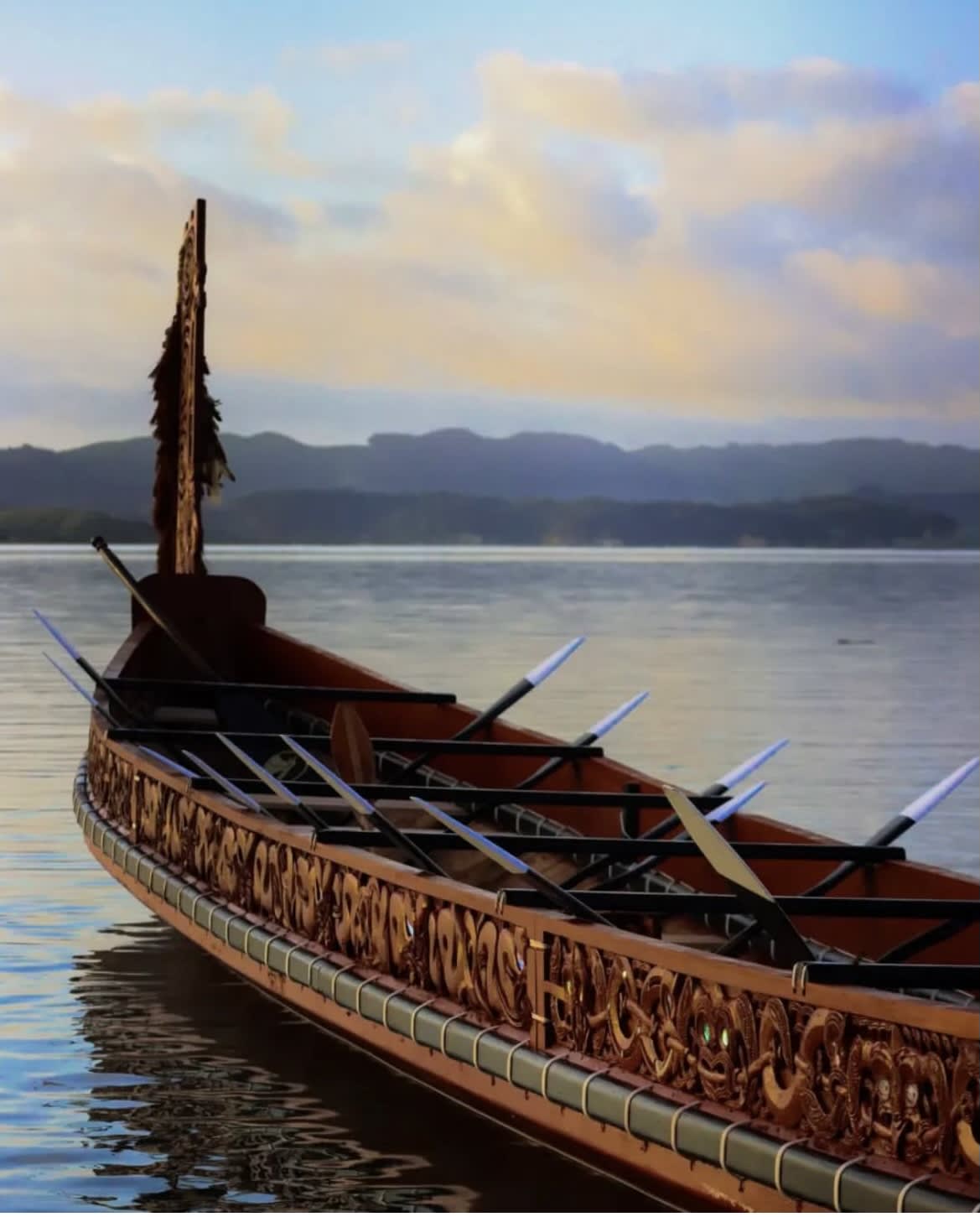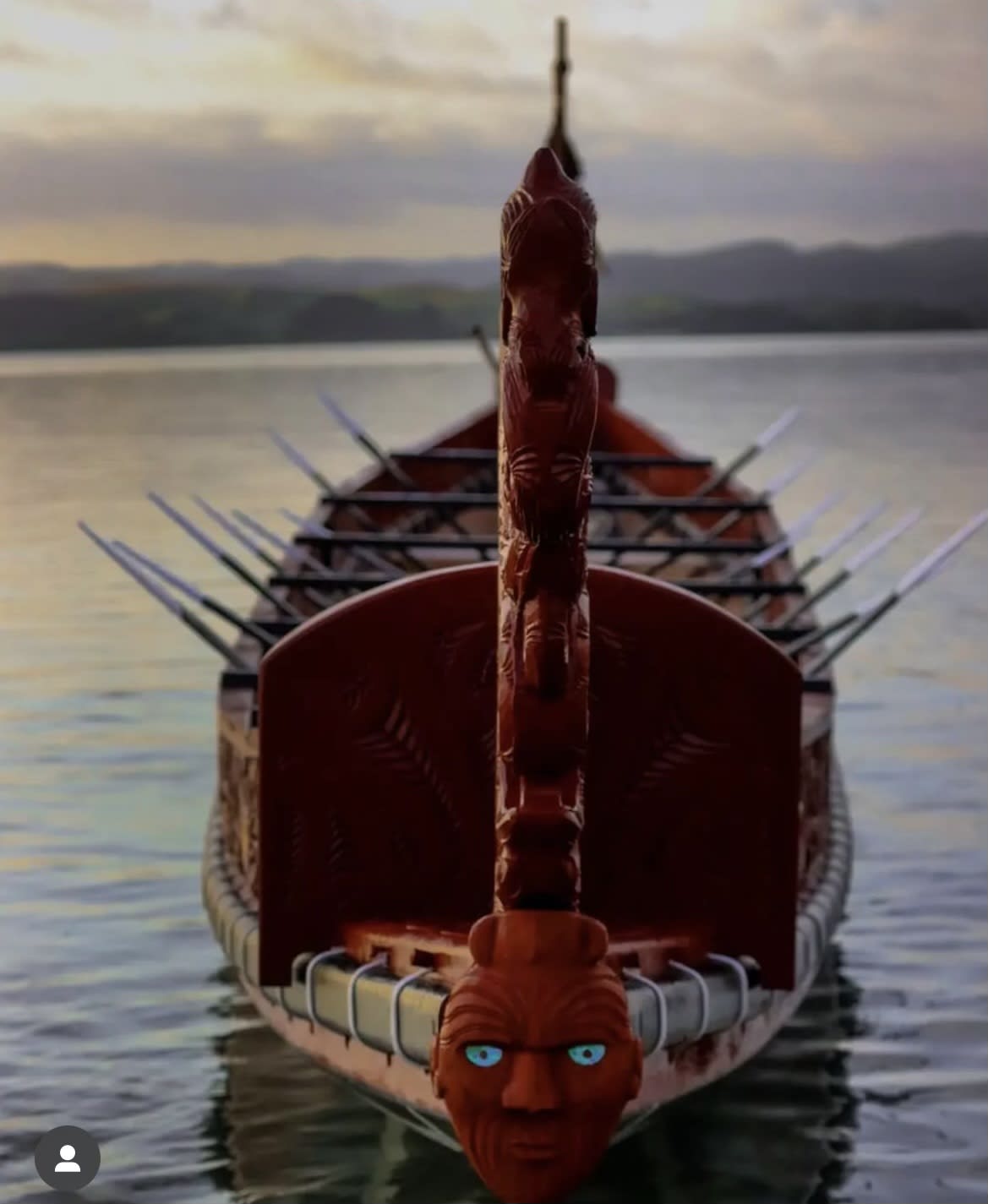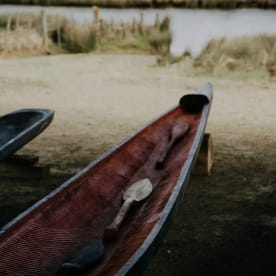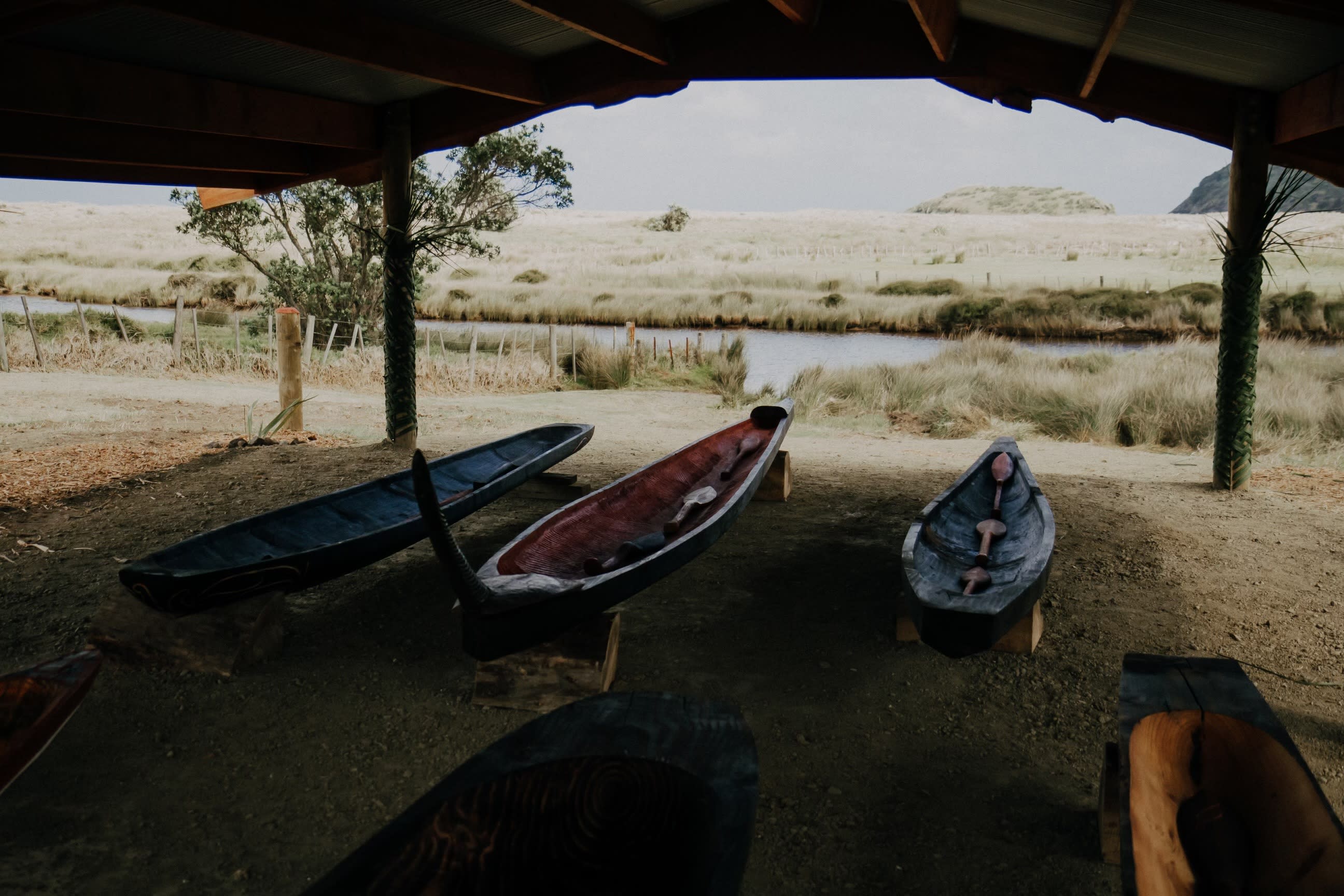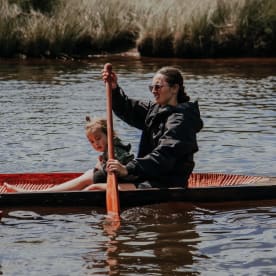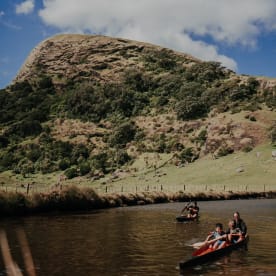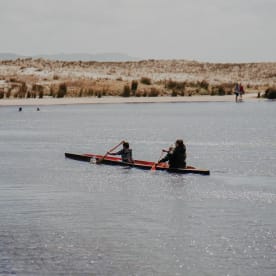Last weekend, Hine Waitai-Dye (Ngāti Kurī) graduated as a master builder of traditional Māori canoes.
The Northland tā moko artist tells Jesse Mulligan that "a lot of random skills" are required to properly construct a waka but an open mind is number one.
"It's easy to come with preconceived notions and think you have an idea of what's happening but you just really don't until you're in it."
Hine Waitai-Dye is the first wahine from Muriwhenua iwi to become a master waka builder.
She says that the art form requires strong carpentry skills, especially confidence with a chainsaw and a toki (Māori axe).
Yet while many people come to waka-building with an idea that they know how to handle these tools, turning a log into a canoe involves using them in "the most crazy ways".
Chainsaws are primarily used to carve the outer shape of the waka, Waitai-Dye says, while toki are used for hulling and carving.
"[With a chainsaw] we're able to mill away that whole top half of the log and turn it into our carvings, our seats, our paddles. Whereas in the traditional way, that would all be like a million little wood chips."
Design skills and a familiarity with Mātauranga Māori (Māori traditional knowledge) are also essential, Waitai-Dye says.
As a tā moko artist with 14 years experience she came to waka building with both of these, but says a willingness to put trust in her tutors was her biggest asset.
Waitai-Dye's first teacher "Papa Hector" – the late master waka builder Sir Hekenukumai Busby – was really good at his job partly due to his precision as a former bridge builder, she says.
Her subsequent teacher Heemi Eruera (a student of Busby) taught her to see the future canoe in a tree that was still standing.
"Heemi would say 'can you see the waka?' I'd be like 'No, what the hell are you on about?'. He's like 'It's in there - can you see it?'
"The first few times I was like 'No...' until we had completed one and I was like 'Okay, yes. I can see what kind of waka this tree is gonna give us."
Now in her sixth year of waka building, Waitai-Dye has worked on 15 waka and completed 7 on her own.
She says keeping the craft alive is a way of keeping the navigational side of Māori history and culture alive.
"There's a whole knowledge system that comes with that and that feeds into other knowledge pools and other areas of te ao Māori. That's one reason why we keep waka hourua (double-hulled craft) and sailing and voyaging alive."
Waitai-Dye hopes that in the future, the use of smaller wooden paddling canoes for water sports can be again "normalised" in Aotearoa.
"It's easy to have those wakas set up ready for people to use, as opposed to inflatable paddle boards and water toys that pop and they leave trash everywhere and microplastics and so on and so forth.
"I hope to inspire anyone into the waka building scene because there is a lack of us with the skill set but it is on the rise and it's in high demand. I hope to inspire anyone who wants to take it up and get into anything Ngā Toi Māori (Māori arts) based."
For the past year, Waitai-Dye has been a student at Ngā Tapuwae O Te Waka – a school dedicated to traditional waka building.
Being named as a "master builder" is most significant to her as a way to honour the Muriwhenua tribal elders who shared their knowledge.
"I'm not really worried about titles. All I'm worried about is the nod from my chiefs to say I can do what I can do."
Watch Sir Hector Busby discuss celestial navigation and waka carving in the short doco He Hekenga Tūhura:
